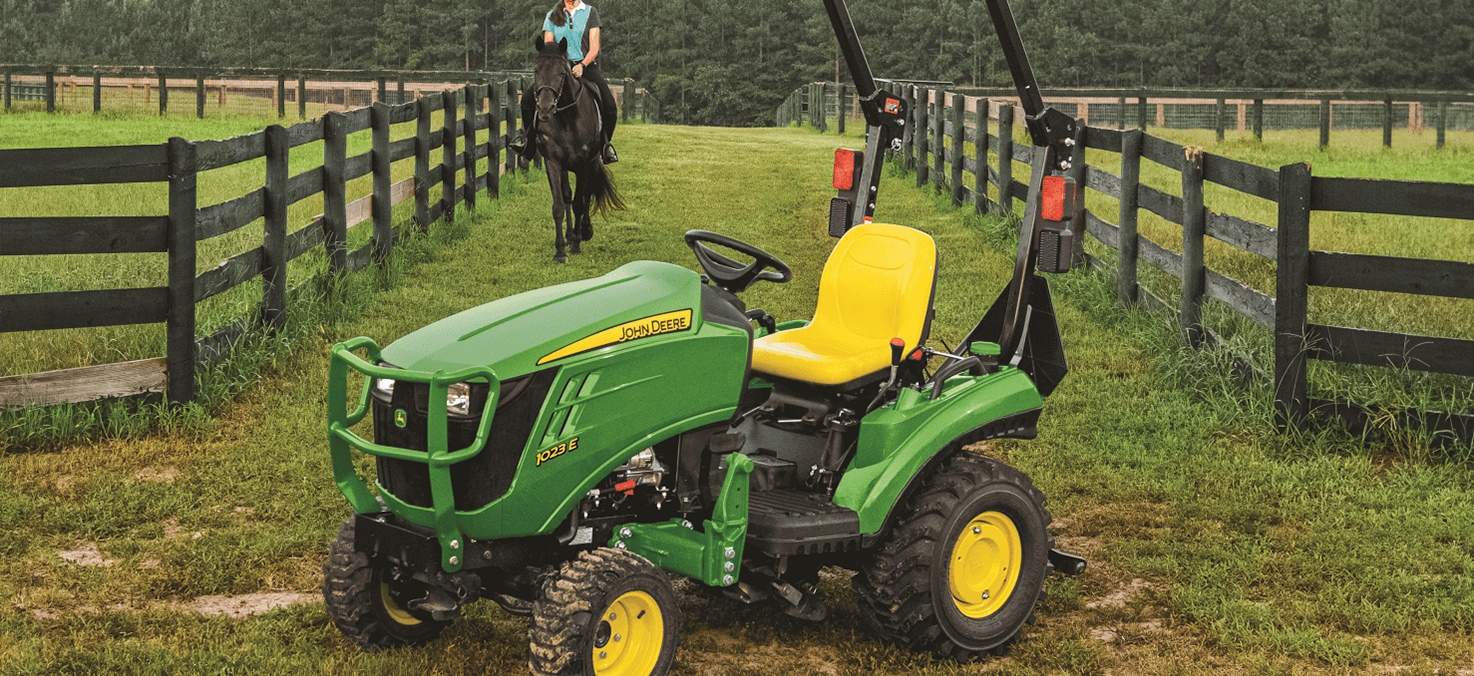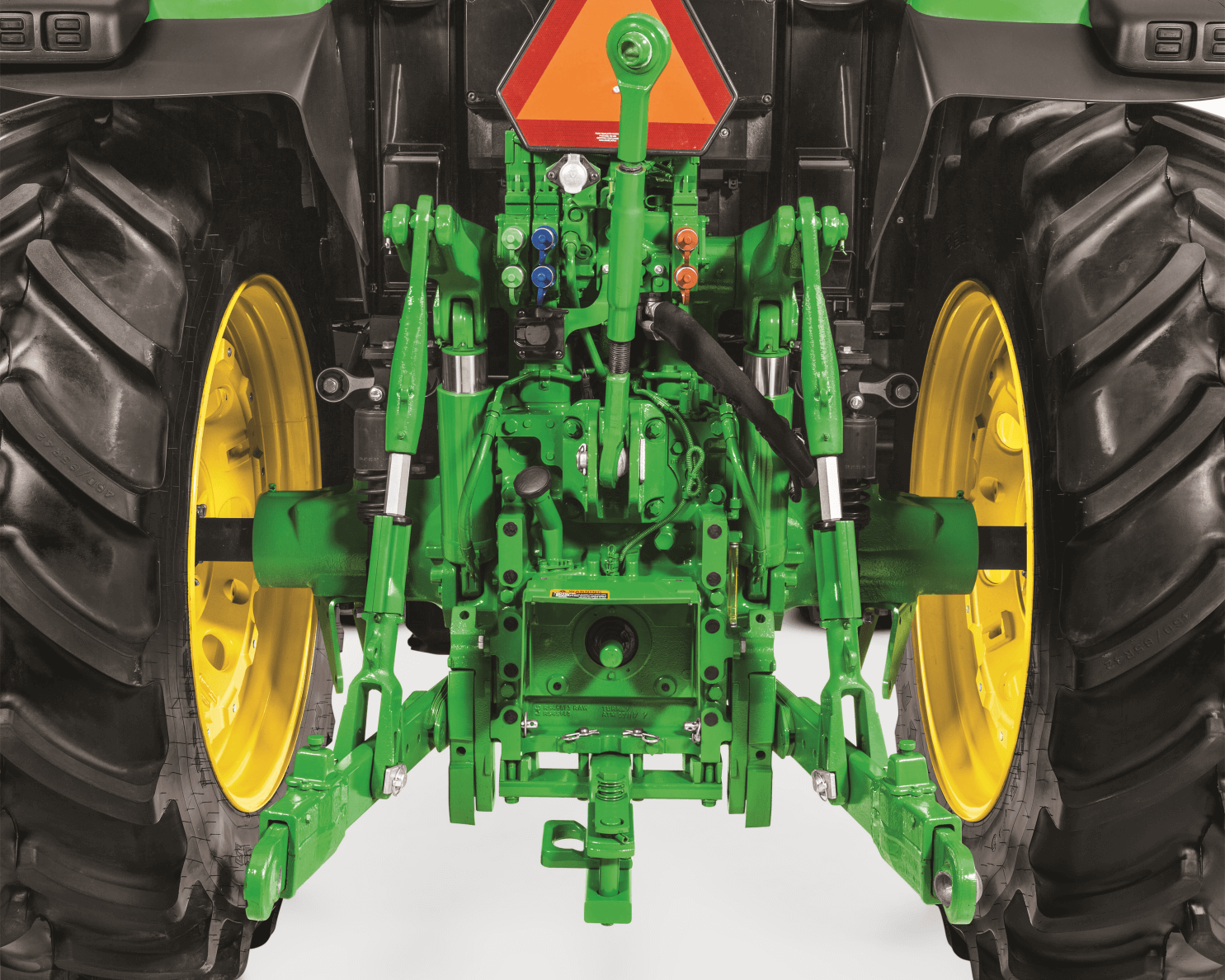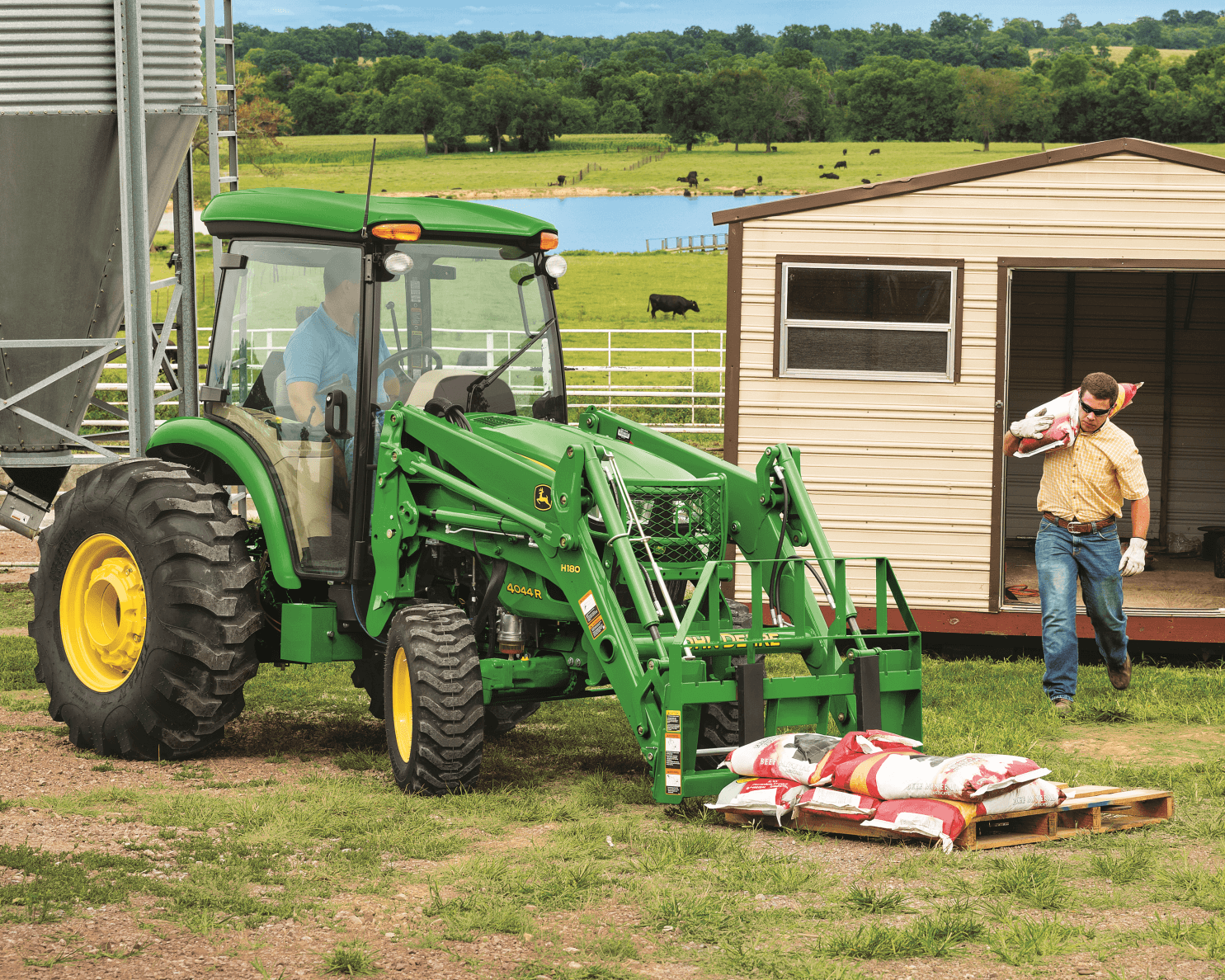
CONSIDER HORSEPOWER
One of the quickest ways to measure a tractor's capabilities is by considering its horsepower ... too little, and you may not be able to handle all the chores you'd like, while too much power may mean you sacrifice fuel efficiency. As a rule, it's better to have slightly more power than you think you'll need; this allows you to 'grow into' your machine as you become more comfortable with its capabilities, and as your needs change. And while straight horsepower is a good figure to start with, more power doesn't necessarily mean more usability.
PTO POWER IS USABLE POWER
You'll hear tractor dealers talk about 'PTO horsepower' quite a bit. Stated simply, the PTO, or power take-off, is the rotating shaft at the rear of the tractor. Rotary implements like cutters are powered by the PTO, which is powered by the tractor's engine; therefore, PTO horsepower is a truer indication of a tractor's capabilities than engine power. Generally speaking, a tractor's PTO horsepower will be roughly 15% less than its engine horsepower.
As you're comparing models and manufacturers, make sure you know how the manufacturer measures horsepower; currently, there's no industry standard governing how horsepower is measured. Knowing how the horsepower is figured will allow you to compare apples to apples.

COMPACT TRACTOR OR UTILITY TRACTOR
As you get a better idea of what you need from your tractor, you may find that one of the larger lawn and garden tractors will do all your chores. In general, if your primary needs are light mowing or dirt work, a well equipped garden tractor may fit the bill. Take a look at the chart for a better idea of each type capabilities.

© COPYRIGHT 2025 SMITH TRACTOR CO. EQUIPMENT - ALL RIGHTS RESERVED| Privacy Policy | Powered By













